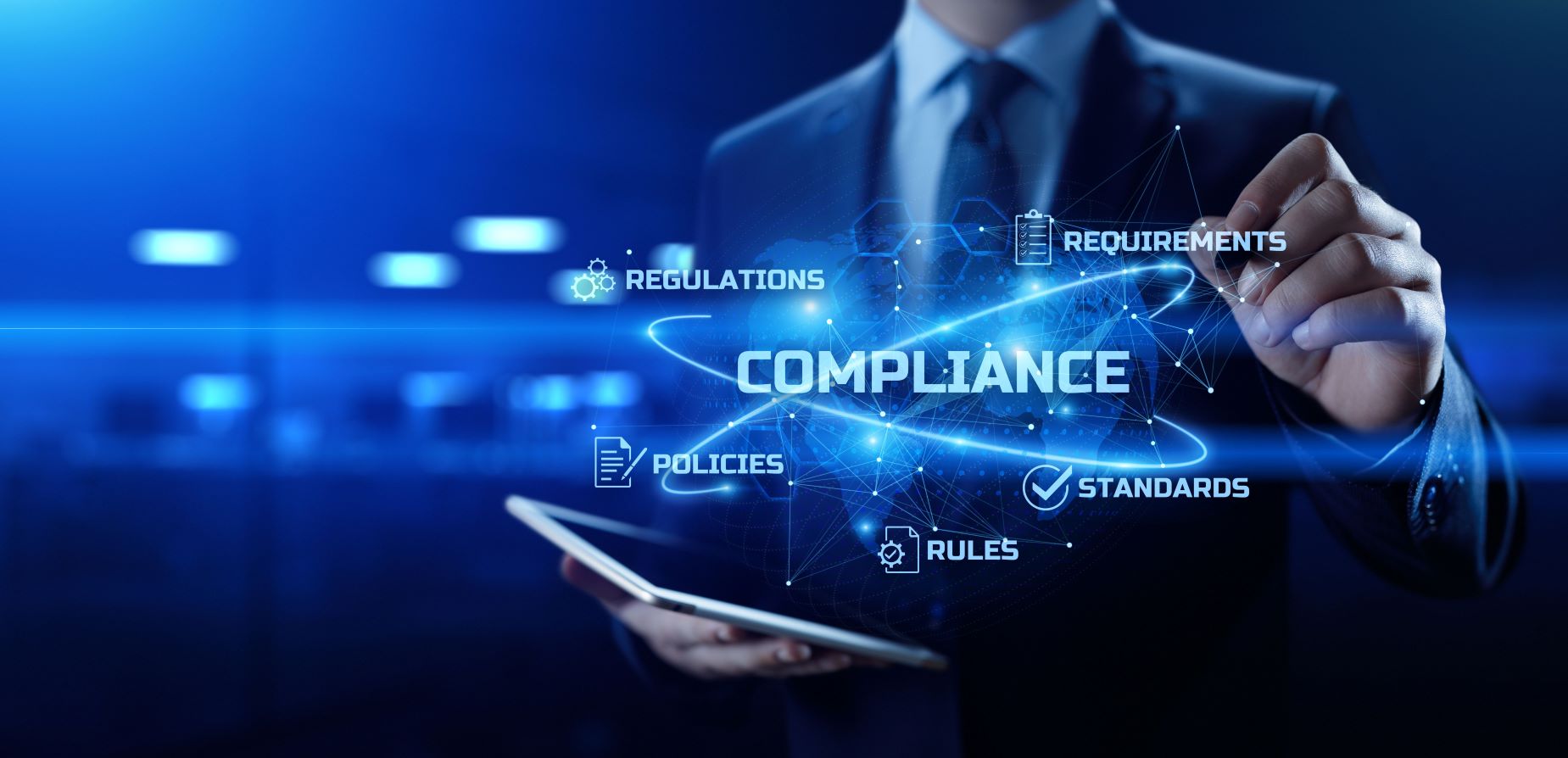The integration of Governance, Risk, and Compliance (GRC) strategies with emerging technologies like Artificial Intelligence and the Internet of Things are reshaping the corporate risk landscape.
Let's take a look at how businesses are adapting and expanding their GRC frameworks to accommodate the new capabilities offered by these cutting-edge technologies, addressing the unique risks they bring, and capitalizing on their potential for enhanced governance and compliance.
Governance, risk, and compliance (GRC) explained
Governance, Risk, and Compliance (GRC) is a term that relates to how an organization structures its business operations and its IT systems to reduce risks and to adhere to industry and governmental regulations and compliance requirements. This includes using a range of tools and methods to implement risk management strategies and to enable self-governance, without preventing a business from reaching its goals and growth targets.
An effective GRC model can help to increase efficiency and productivity, reduce non-compliance, protect data, limit wasted resources, and enable improved sharing of information across the organization. With 66% of organizations experiencing at least one cyber attack in the last year, GRC strategies also need to be robust and scalable enough to adapt to changing technologies.
Governance
Governance refers to the policies, rules, and frameworks that a company needs to follow to meet its business targets.
For example, this can involve outlining the responsibilities of stakeholders to set overall standards across the organization and to provide support to employees in terms of following procedures and adhering to strong corporate governance.
A company's social responsibility strategy also falls under the scope of corporate governance. Other aspects include:
• Resource management
• Transparent processes for sharing information
• Ethics and accountability policies
• Conflict resolution policies
Risk (management)
A business is subject to various elements of risk from many different angles, including legal, financial, security, and strategic risks. Implementing an effective risk management strategy can not only identify these potential risks but also put measures in place to safeguard the business from them.
Larger businesses may use an enterprise-level risk management program that can analyze a business, implement asset protection strategies, and accurately predict possible issues to mitigate their impact. In recent years, these programs have become even more effective thanks to technology such as artificial intelligence.
AI has already proved particularly successful in terms of strengthening cybersecurity, automating a wide range of tasks, and monitoring for unusual behavior on the network.
Compliance
Compliance refers to the actions taken by an organization to adhere to laws, rules, and regulations, especially regulations set by industry bodies. Most businesses, especially larger organizations also outline their own corporate policies that need to be strictly followed.
Compliance relies on the implementation of procedures that ensure an organization does not break industry regulations, while also abiding by federal law. In healthcare, for example, organizations must comply with regulations such as the Health Insurance Portability and Accountability Act (HIPAA) to protect the privacy of their patients.
The importance of GRC
GRC programs are vital in helping organizations improve decision-making and minimize risk. GRC allows stakeholders to construct effective policies that can be followed by the entire organization, resulting in a solid framework that defines how decisions are made and what actions are taken.
Other benefits of a GRC strategy include:
- Better decision-making that is driven by data, allowing decisions to be made quickly with the help of modern technologies to deliver better outcomes.
- Helps to deliver more responsible and ethical operations that can lead to a better working environment and employee culture.
- Improved cybersecurity to protect both company and client data. This is essential due to the financial implications of a data breach, as well as the reputational damage and loss of trust that puts the future of a business at risk. The importance of data protection has been further highlighted by data privacy regulations such as the General Data Protection Regulation (GDPR).
GRC and the Internet of Things
Businesses of all sizes have become better connected over the years, with the help of modern technology such as the Internet of Things. IoT creates a link between systems, computers, and portable devices, allowing them to automatically send information to each other. This helps to boost communication across the organization, bridging the gap between different departments and streamlining processes.
However, this increased connectivity also presents business risks, with data more exposed than ever and potentially susceptible to new and more sophisticated cyber-attacks. As a result, IoT must be incorporated into any GRC strategy to protect all devices and systems across the business.
The challenge
As more systems and devices are added to a network, the risk level and attack surface of the business grows, with the digital environment becoming more complex as the amount of data that is generated and transferred increases. Although we're going to see government-backed cybersecurity certifications for IOT devices, the rollout will likely be gradual, while the problem is immediate.
To combat this, organizations must have continuous monitoring in place that is highly scalable. This requires a range of software tools and services that can analyze networks, identify potential threats, and mitigate risks in a fast and efficient manner.
This should be combined with strict auditing and documentation procedures to ensure an organization has full visibility of all systems and devices.
In modern digital environments that integrate IoT, manual processes are no longer fit for purpose when it comes to cybersecurity. Automation tools are vital to analyzing networks in real-time, and sending alerts should any unusual activity or unauthorized access be identified.
GRC and artificial intelligence
Artificial intelligence (AI) is expected to play a key role in implementing governance, risk management, and compliance strategies, particularly in areas such as fraud detection and prevention.
AI can optimize communication workflows, improve report accuracy, automate report generation, and other mundane tasks such as ensuring privacy compliance, converting PDF documents, employee training, contract reviews, and auditing.
On a less mundane level, the analytic power of AI allows organizations not only to automate and streamline—but also to leverage these capabilities for a more holistic view of their operations, helping them identify potential areas for improvement by analyzing trends, predicting risks, and aiding in strategic decision-making.
AI use cases for GRC
While we're only scratching the surface of AI capabilities in service of GRC, we're already seeing drastic changes in:
- Horizon Scanning – AI scanning tools can evaluate new or pending legislation, rules, and laws, and even analyze public statements made by regulatory bodies to detect any future impact the changes may have on an organization.
- Policy Management – AI can effectively map regulations and align policies and procedures should they be subject to any changes.
- Resource Planning Software – Enterprise-level resource planning software such as SAP S/4HANA can serve as an indispensable tool in terms of leveraging AI for enhanced data analysis and decision-making in GRC. This is often considered one of the most effective ways of implementing GRC in digital environments that integrate emerging technologies.
- Regulatory Change Management and Obligations – AI monitoring can assess current regulatory obligations while checking for any changes to ensure company policies remain up-to-date. In the finance sector, regulatory change notifications can be sent in their hundreds each day, making it practically impossible to review and respond to them manually.
- Internal Controls and Resilience Management – AI can assist in improving internal controls and finance systems, helping to evaluate and optimize current controls by identifying new trends and by analyzing the latest data. Detecting any failing or duplicate controls so they can be removed will help to save costs and reduce overall risk within the business, contributing to greater organizational resilience.
Conclusion
AI and IoT have helped to transform digital environments for large businesses, however, any change in technology presents a challenge in terms of adhering to GRC frameworks.
IoT devices and systems increase the attack surface of an organization, making it necessary to devise new policies and improve cybersecurity, including the use of automated monitoring tools. AI, meanwhile, can help to transform GRC strategies in many ways, from monitoring regulatory changes to analyzing the resilience of internal controls- helping businesses to create more effective GRC models.





